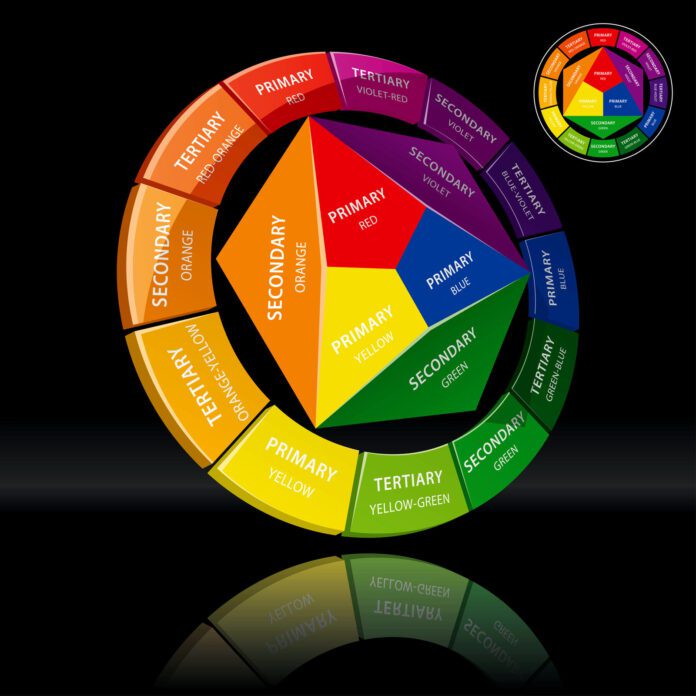Color theory in art is an incredibly important concept that can help artists to create stunning, visually pleasing works. It is the study of how color can be used to evoke emotion, influence mood, and guide the eye of the viewer. There are a variety of color theories that have been developed over centuries by a range of influential artists and scientists. While learning these theories can feel overwhelming, understanding their basic concepts and principles can help you unlock your inner artist.
What is Color Theory?
Color Theory is an essential component of art. It is the science of how different colors interact and create balance and harmony. Color theory has been around since ancient times, however, it was not until the 18th century that it was fully developed and popularized.
At its most basic level, the color theory states that certain hues can be blended together to create a particular effect or emotion in a work of art. By understanding these combinations, an artist can use them to their advantage to achieve their desired outcome. For example, warm colors such as reds, oranges, and yellows are often associated with energy and passion while cool tones like blues, greens, and violets foster calmness and tranquility. Knowing this information can help artists find the perfect blend for any artwork they are creating.
Color Schemes
Color schemes are an important part of art and design, as they can evoke a certain emotion or mood within the viewer. But what exactly is a color theory in art? Unlocking the secrets of color theory can help enhance your artwork and create visually appealing designs.
Understanding how colors interact with one another will allow you to choose the right color combinations for every project. Color theory refers to the use of different hues, shades, and tones in order to create contrast, balance, unity, and harmony in a design piece. It involves considering how colors look when combined together, along with their emotional effects on viewers. By understanding this basic knowledge about color schemes you can start creating some amazing artwork!
Primary Colors
Primary colors are a fundamental concept in the study of color theory in art. Primary colors refer to a set of three specific hues which can be combined with each other or mixed together to create a vast spectrum of different tints and shades. Understanding the science behind primary colors is key for any artist who wants to gain mastery over the use of color in their artwork.
The standard set of primary colors includes red, yellow, and blue. Red and yellow when combined make orange, blue and yellow make green, and blue and red make purple. These three combinations form the basis for all other possible secondary, tertiary, complementary, contrasting, warm, or cool palettes used by artists throughout history to create stunning visual effects on canvas or paper.
Secondary Colors
The world of art is filled with a variety of colors, but not all artists understand the basics of color theory. In order to truly unlock the secrets of color in art, one must first understand what secondary colors are and how they can be used artistically. Secondary colors are created by mixing two primary colors together. The most common pairs for creating secondary colors are red and blue, yellow and purple, as well as orange and green. These secondary hues can have a powerful effect on an artwork’s composition and overall appeal.
By understanding their use in artwork, artists can gain a better grasp of color theory as it applies to their individual pieces. This article will explore what secondary colors are and how they interact with each other within the context of art projects. Readers will gain a better understanding of the basic principles behind color theory in art by exploring this concept further.
Complementary Colors
Color theory in art is an essential component of understanding the fundamentals of how visual arts are created. Complementary colors, often referred to as opposites, are two colors that appear opposite each other on the color wheel and when combined create a vibrant contrast. As a basic concept of color theory, complementary colors make up one of the most popular combinations used by artists to create stunning visuals with their artwork.
Complementary colors are incredibly versatile and can be used for various types of artwork from graphic design to painting. For example, red and green complement each other perfectly when it comes to creating visuals for nature-based themes such as landscapes or wildlife images. Combining complimentary hues allows artists to create bold contrasts between lights and darks while maintaining harmony within their pieces.
Mono, Tri, and Tetradic Schemes
Color theory in art is the study of how colors interact and blend with each other to create different visual effects. One aspect of color theory are mono, tri, and tetradic schemes. Mono schemes use one main color as a template for creating visuals that have a unified look and feel. Tri schemes involve three main colors, typically chosen from opposite sides of the color wheel. This creates a visual tension that can be used to enhance an artwork’s impact.
Finally, tetradic schemes use four main colors chosen from all around the color wheel. These often lead to complex visuals with many different hues and shades that combine together in interesting ways. Unlocking the secrets of these three basic types of color scheming can give artists a greater understanding of how they can use colors to create stunning works of art.
Have you ever wondered how a painter chooses colors for a painting or what principles they follow when creating their work? Color theory in art is an integral part of the creative process. It allows artists to understand how colors interact with each other and create meaningful combinations that can evoke different emotions.
Applications in Art
Art is an expression of the human experience that can come in many forms and shapes, from painting to sculpture to photography. However, behind each art form lies a common denominator: application. The application encompasses all the techniques and principles used by artists to create their artwork, including color theory. Color theory in art is a branch of knowledge that deals with how colors interact and how they are used in creating visual effects.
At its core, color theory is based on three primary colors—red, yellow, and blue—which when combined can create almost any other color imaginably. By understanding the basics of this science, artists can use it to enhance their work with beautiful hues that communicate certain moods or ideas through juxtaposition and contrast. Additionally, color theory helps determine which colors will harmonize best together on canvases or sculptures for maximum impact when viewed by others.
Conclusion
Color theory in art is an essential element of any artist’s palette. It is the study of how different colors interact with one another and how to combine them to create a desired effect. By understanding the principles of color theory, artists can better communicate their ideas and stories through their artwork.
To unlock the secrets of color theory, it is important to not only understand each individual color but also how they work together to create contrast, harmony, and other effects. Additionally, color temperature can be used to help evoke certain emotions from viewers. While the color theory may seem complex at first glance, by studying its core concepts artists can make more informed decisions when creating their artworks.
The importance of understanding color theory cannot be overstated, its applications are essential for any visual artist looking to take their craft further.





